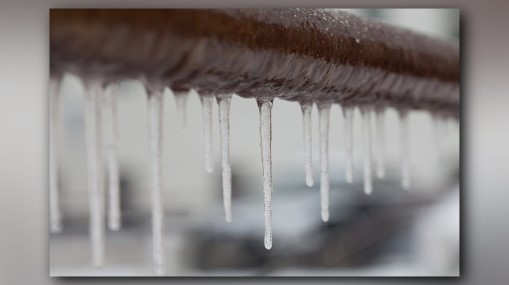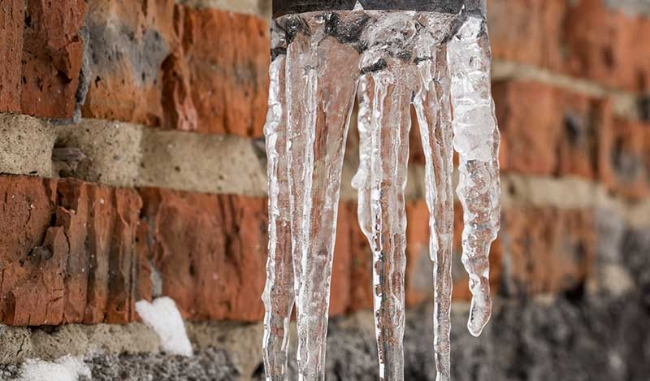Everyone may have his or her own conception when it comes to Winter Plumbing Precautions: Preventing Frozen Pipes.

Winter can ruin your pipes, specifically by freezing pipes. Here's exactly how to avoid it from occurring and what to do if it does.
Introduction
As temperature levels drop, the risk of icy pipelines boosts, possibly bring about pricey repair services and water damage. Understanding how to prevent icy pipelines is important for property owners in cold environments.
Prevention Tips
Insulating prone pipes
Cover pipes in insulation sleeves or make use of warm tape to protect them from freezing temperature levels. Focus on pipelines in unheated or exterior locations of the home.
Heating strategies
Keep interior rooms sufficiently warmed, specifically areas with plumbing. Open up closet doors to permit warm air to flow around pipelines under sinks.
Just how to determine frozen pipes
Search for lowered water flow from taps, uncommon odors or noises from pipes, and noticeable frost on exposed pipes.
Long-Term Solutions
Structural modifications
Think about rerouting pipes away from exterior walls or unheated locations. Include added insulation to attic rooms, basements, and crawl spaces.
Upgrading insulation
Invest in top quality insulation for pipelines, attic rooms, and walls. Proper insulation aids preserve constant temperatures and reduces the risk of icy pipelines.
Securing Outside Plumbing
Garden tubes and outside taps
Detach and drain pipes garden hoses before winter. Set up frost-proof spigots or cover outside taps with insulated caps.
Comprehending Icy Pipes
What creates pipes to freeze?
Pipes ice up when revealed to temperatures listed below 32 ° F (0 ° C) for extended periods. As water inside the pipelines ices up, it increases, putting pressure on the pipeline walls and potentially triggering them to rupture.
Threats and damages
Frozen pipelines can lead to supply of water interruptions, residential property damage, and costly repairs. Burst pipelines can flood homes and create substantial architectural damages.
Signs of Frozen Pipeline
Determining icy pipelines early can stop them from breaking.
What to Do If Your Pipelines Freeze
Immediate actions to take
If you think frozen pipelines, maintain faucets open to alleviate pressure as the ice thaws. Utilize a hairdryer or towels taken in hot water to thaw pipelines slowly.
Verdict
Avoiding icy pipes calls for proactive procedures and fast reactions. By recognizing the causes, indications, and safety nets, property owners can secure their pipes during cold weather.
5 Ways to Prevent Frozen Pipes
Drain Outdoor Faucets and Disconnect Hoses
First, close the shut-off valve that controls the flow of water in the pipe to your outdoor faucet. Then, head outside to disconnect and drain your hose and open the outdoor faucet to allow the water to completely drain out of the line. Turn off the faucet when done. Finally, head back to the shut-off valve and drain the remaining water inside the pipe into a bucket or container. Additionally, if you have a home irrigation system, you should consider hiring an expert to clear the system of water each year.
Insulate Pipes
One of the best and most cost-effective methods for preventing frozen water pipes is to wrap your pipes with insulation. This is especially important for areas in your home that aren’t exposed to heat, such as an attic. We suggest using foam sleeves, which can typically be found at your local hardware store.
Keep Heat Running at 65
Your pipes are located inside your walls, and the temperature there is much colder than the rest of the house. To prevent your pipes from freezing, The Insurance Information Institute suggests that you keep your home heated to at least 65 degrees, even when traveling. You may want to invest in smart devices that can keep an eye on the temperature in your home while you’re away.
Leave Water Dripping
Moving water — even a small trickle — can prevent ice from forming inside your pipes. When freezing temps are imminent, start a drip of water from all faucets that serve exposed pipes. Leaving a few faucets running will also help relieve pressure inside the pipes and help prevent a rupture if the water inside freezes.
Open Cupboard Doors
Warm your kitchen and bathroom pipes by opening cupboards and vanities. You should also leave your interior doors ajar to help warm air circulate evenly throughout your home.

I was brought to that write-up on Prevent Frozen Pipes through a good friend on another blog. Enjoyed reading our content? Please quickly share it. Let another person discover it. I value your readership.
Browse Our Site
Comments on “How to Defend Your Pipes from Cold Weather: Expert Tips”